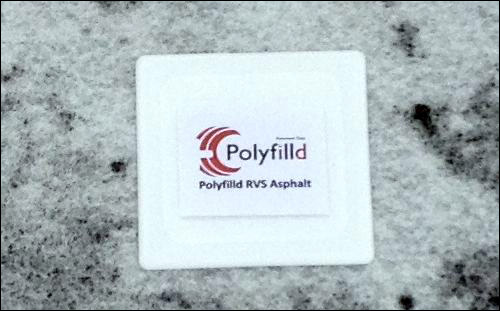Jan 11, 2012Roadwork agencies and municipalities periodically send inspectors onto the network of roads they manage, in order to identify areas requiring repair. Now, some of those roads—in Austria and the United Kingdom—are equipped with passive radio frequency identification transponders that inform inspectors about the roadwork's history, via RFID readers located onboard vehicles.
The solution was developed by an Austrian firm known as Polyfilld. The company, founded in 2012, provides nonwoven geosynthetic polypropylene fabric designed to be rolled out between a roadbed and new layers of asphalt during road repair. The material is equipped with RFID tags that are read by inspector using an RFID interrogators installed on the back of their vehicles as they pass by at a speed of 40 kilometers per hour (25 miles per hour) or more.

The firm is now testing a second version of its Polyfilld Pavement Data system, with ultrahigh-frequency (UHF) tags and readers designed by Schreiner LogiData specifically for the application. The first version of the RFID-based solution, installed in U.K. roadways, employs Schreiner LogiData high-frequency (HF) 13.56 MHz passive RFID tags compliant with the ISO 15693 standard. However, the company notes, the HF tags provide limited read rates when vehicles pass over them (the tags are embedded under a layer of asphalt several centimeters thick), so Polyfilld is now testing a UHF version in roadways throughout northern Austria.
Nonwoven polypropylene material is utilized to bond a new asphalt surface to a roadbed when damaged or worn street is repaved. During the resurfacing process, the material is laid down on the exposed roadbed, after which asphalt is poured over it. This prevents precipitation or cracks to carry into the roadbed from the pavement's upper layers. Nonwoven asphalt overlay fabric has been available from a variety of vendors for about 35 years, says Rainer Lugmayr, the company's CEO and cofounder. The polypropylene material not only protects against cracks in the upper pavement layers, but also acts as a cushion between the two layers, reducing the incidence of wear and tear on roadways, as well as the need for frequent resurfacing.
Polyfilld has provided its HF RFID solution to a number of agencies, including Transport for London, and the tags were laid on the roadbeds at approximately every 200 meters (656 feet) of roadway, beginning in 2007. Each tag is encoded with a unique ID number that links to data in the user's back-end system regarding the road's resurfacing history. Polyfilld can commission these tags or let a user perform this task itself, by utilizing a handheld device to read each tag as it is laid, and then inputting such data as the resurfacing material employed, the asphalt compaction pressure and the date. That information is stored in the user's own database. Polyfilld provides the user with not only tags and readers, but also middleware that links each tag read back to the user's own road-maintenance software.
A Schreiner LogiData RFID reader is installed on the trailer hitch at the back of an inspector's vehicle. The interrogator captures the unique ID number, forwarding that data to a laptop or tablet computer in the vehicle, via either a cabled connection or Bluetooth. Inspectors typically travel in groups of two—one driving the vehicle, the other using the computer. As the vehicle passes over a tag, the computer transmits the tag data back to the server, which then displays the history of the roadway in which that tag is embedded. In that way, they have remote access to the roadwork history at any given location they happen to visit.
The HF version, however, has some limitations with regard to read reliability, the company notes, so last year, the firm began developing a UHF version. The new model, now being tested in Austria, includes EPC Gen 2 tags (designed by Schreiner LogiData) that can be interrogated at a greater speed by a vehicle-mounted reader (also designed by Schreiner LogiData). The UHF reader includes an antenna angled to lengthen the amount of time during which a reader passing over the tag at high speed can read it, explains Johannes Becker, Schreiner LogiData's competence center director.
Testing of the UHF system has been underway since last summer, Lugmayr says, adding that the results have been good to date. "The results are convincing everybody [that the system works]," he states. Polyfilld has been granted a patent for the technology in Europe, as well as in the United States and South Africa—which are the regions that the company will initially target while marketing the solution. He also expects additional road authorities in upper Austria to begin utilizing the technology later this year.


